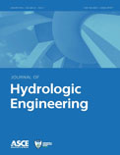
JOURNAL OF HYDROLOGIC ENGINEERING
Scope & Guideline
Exploring the Future of Water Engineering
Introduction
Aims and Scopes
- Hydrological Modeling:
Development and application of various hydrological models to simulate and predict water flow, sediment transport, and other hydrological processes across diverse landscapes. - Climate Change Impact Analysis:
Investigating the effects of climate variability and change on hydrological systems, including changes in precipitation patterns, runoff, and flood frequency. - Water Resource Management:
Research aimed at improving strategies for sustainable water resource management, including the design and evaluation of stormwater management systems and flood mitigation strategies. - Data-Driven Approaches and Machine Learning:
Utilizing advanced data analytics, machine learning, and artificial intelligence techniques to enhance hydrological predictions and model performance. - Soil-Water Interactions:
Exploring the interactions between soil properties and water movement, focusing on infiltration, groundwater recharge, and soil erosion processes. - Hydraulic Engineering:
Studies related to the design and analysis of hydraulic structures, including dams, levees, and urban drainage systems. - Integrated Watershed Management:
Research that emphasizes the integration of hydrological, ecological, and socio-economic factors for effective watershed management.
Trending and Emerging
- Machine Learning and AI in Hydrology:
There is an increasing trend towards the application of machine learning and artificial intelligence for hydrological modeling, enhancing predictive capabilities and data analysis. - Climate Change Adaptation Strategies:
Research focused on developing and assessing strategies for adapting to climate change impacts on hydrological systems is gaining prominence, addressing urgent environmental challenges. - Green Infrastructure and Low-Impact Development (LID):
Emerging interest in sustainable urban water management practices, including green infrastructure and LID techniques, as solutions to mitigate flooding and manage stormwater. - Integrated Modeling Approaches:
A growing trend in integrating various modeling approaches, including hydro-meteorological, ecological, and socio-economic models, to address complex water resource challenges. - Remote Sensing Applications:
Increased utilization of remote sensing technologies for hydrological monitoring and assessment, providing valuable data for modeling and management efforts. - Resilience and Risk Assessment:
An emerging focus on assessing resilience and risks associated with hydrological extremes, including floods and droughts, to inform management strategies.
Declining or Waning
- Traditional Hydrology Methods:
There is a noticeable decrease in papers focusing solely on classical hydrology methods without integration of modern techniques, indicating a shift towards more innovative approaches. - Static Hydrological Models:
Research centered on static or traditional models is waning, as the field increasingly embraces dynamic modeling that incorporates real-time data and adaptive methodologies. - Regional Studies without Broader Implications:
Studies that focus narrowly on specific regional hydrological issues without broader applications or implications are appearing less frequently, reflecting a trend towards more universally applicable research. - Single-Factor Analysis:
Research focusing on single variables or factors affecting hydrology is declining in favor of multi-factor analyses that consider complex interactions within hydrological systems.
Similar Journals
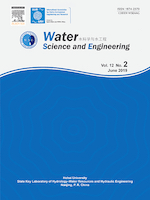
Water Science and Engineering
Empowering Research for a Water-Secure WorldWater Science and Engineering, published by ELSEVIER, is a premier open access journal that has been disseminating vital research in the realms of civil and structural engineering as well as ocean engineering since 2008. With its ISSN 1674-2370 and E-ISSN 2405-8106, this journal plays a crucial role in advancing knowledge and innovation within the sector, evidenced by its impressive rankings in Scopus—holding the 15th position out of 105 in Ocean Engineering and 76th out of 379 in Civil and Structural Engineering, placing it in the 86th and 80th percentiles, respectively. Attaining a Q1 classification in both categories for 2023 highlights its importance and influence in the academic and professional communities. The journal addresses a broad spectrum of topics integral to water sciences, offering significant insights for researchers, professionals, and students alike. With a convergence period spanning from 2010 to 2024, it continues to explore contemporary issues and advancements, providing a pivotal platform for the dissemination of research. The journal is accessible to a global audience, reaffirming its commitment to fostering open access and enhancing accessibility to vital scientific literature.

Hydrology Research
Transforming water science through open access innovation.Hydrology Research, a leading academic journal published by IWA Publishing, is dedicated to advancing the field of water science and technology. With an impressive impact factor and a Q2 ranking in its category, the journal plays a pivotal role in disseminating innovative research and practices in hydrology. Established in 1973 and transitioning to an Open Access model in 2020, it provides unrestricted access to high-quality articles that cover a broad spectrum of topics, including hydrological processes, water management, and environmental impact assessments. Situated in Denmark, Hydrology Research continues to thrive as an essential platform for researchers, professionals, and students alike, encouraging the exchange of ideas that contribute to sustainable water solutions worldwide. With a comprehensive coverage of research converging from 1973 to 2024, it stands as a testament to ongoing progress in the water science community.

Water Conservation Science and Engineering
Innovating Tomorrow's Water Conservation StrategiesWater Conservation Science and Engineering, published by SPRINGERNATURE, is a vital academic journal dedicated to advancing the fields of environmental engineering, ocean engineering, waste management, and water science and technology. Since its inception in 2016, the journal has quickly established itself within the academic community, achieving a commendable Q3 ranking across multiple categories in 2023. With an ISSN of 2366-3340 and an E-ISSN of 2364-5687, it is accessible to a global readership eager to explore the latest research and innovations in water conservation and sustainable practices. Although currently not open access, the journal is committed to publishing high-quality scholarly articles that provide insights into effective water management strategies, innovative engineering solutions, and the critical importance of preserving our water resources. Based in Singapore, Water Conservation Science and Engineering aims to foster interdisciplinary collaboration among researchers, professionals, and students, making it an essential resource for anyone passionate about environmental sustainability and preservation.
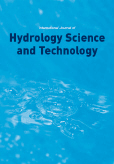
International Journal of Hydrology Science and Technology
Transforming Water Science through Groundbreaking ResearchThe International Journal of Hydrology Science and Technology, published by InderScience Enterprises Ltd, is a distinguished platform dedicated to advancing knowledge in the field of hydrology, environmental engineering, and water science. With an ISSN of 2042-7808 and an E-ISSN of 2042-7816, this journal, established in 2011 and continuing through 2024, serves as an essential resource for researchers, professionals, and students alike. Despite being categorized in the Q3 quartile across multiple disciplines including Earth and Planetary Sciences, Environmental Engineering, Waste Management and Disposal, and Water Science and Technology, the journal maintains a reputation for contributing significant findings that impact both theory and practical applications in addressing hydrological challenges. Currently unavailable through Open Access options, the journal remains committed to disseminating valuable research that informs sustainable practices in water resource management. The editorial team encourages submissions that explore innovative strategies and methodologies while fostering interdisciplinary discussions, making this journal a pivotal player in shaping the future of hydrological science.

Journal of Hydrology and Hydromechanics
Elevating the conversation on water dynamics and engineering.Journal of Hydrology and Hydromechanics, published by SCIENDO, is a prominent open access journal that has been disseminating crucial research findings in the fields of fluid flow, mechanical engineering, and water science since its inception in 1973. With its open access model established in 2009, the journal ensures that innovative research is available to a global audience, enhancing the visibility and impact of studies related to hydrological systems and their applications. The journal holds a commendable position within the academic community, reflected in its category quartiles, achieving Q2 rankings in 2023 across key areas such as Fluid Flow and Transfer Processes, Mechanical Engineering, and Water Science and Technology. Its Scopus rankings further highlight its relevance, placing it among the top journals in its categories. The Journal of Hydrology and Hydromechanics not only serves as a vital resource for researchers and professionals aiming to advance hydrological knowledge but also provides students with a wealth of information to better understand the complexities of water dynamics and associated engineering challenges.
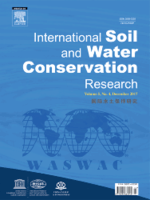
International Soil and Water Conservation Research
Advancing sustainable solutions for soil and water conservation.International Soil and Water Conservation Research is a premier, peer-reviewed academic journal dedicated to advancing the field of soil and water conservation. Published by KEAI PUBLISHING LTD in China, this Open Access journal has established itself as a vital resource since its inception in 2013, offering researchers and practitioners an unparalleled platform for sharing innovative research and methodologies. With its impressive impact factor and recognition as a Q1 category journal in Agronomy, Water Science, Nature and Landscape Conservation, and Soil Science, it ranks among the top journals in its field, as evidenced by its high Scopus ranks—with ranks such as #10 in Soil Science and #12 in Nature and Landscape Conservation. The journal is committed to not only enhancing the scientific community's understanding of conservation practices but also addressing global challenges related to sustainable land and water resource management. By fostering interdisciplinary collaboration, International Soil and Water Conservation Research serves as an essential reference point for scholars, professionals, and students aiming to contribute to sustainable practices and policies in the context of agriculture and environmental management.
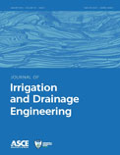
JOURNAL OF IRRIGATION AND DRAINAGE ENGINEERING
Empowering Research for Effective Water Resource ManagementJOURNAL OF IRRIGATION AND DRAINAGE ENGINEERING, published by the ASCE - American Society of Civil Engineers, stands as a pivotal resource in the fields of irrigation and drainage engineering. With a rich publication history dating back to 1966 and continuing robustly through to 2024, this journal serves as a critical platform for disseminating innovative research and developments that contribute to effective water management practices. Catering to an audience of researchers, professionals, and students, it holds a notable impact factor within its categories, ranking Q2 in Agricultural and Biological Sciences (miscellaneous) and Q3 in both Civil and Structural Engineering and Water Science and Technology for 2023. This journal not only stimulates dialogue among experts but also addresses pressing global water challenges, promoting sustainable practices in resource management. Although it does not offer open access, the depth of its content and adherence to rigorous academic standards ensure it remains an essential citation for anyone involved in water resource engineering and the applied sciences surrounding agricultural efficiency.
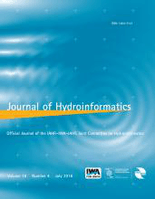
JOURNAL OF HYDROINFORMATICS
Pioneering Solutions for Water-Related Challenges.JOURNAL OF HYDROINFORMATICS, published by IWA PUBLISHING in the United Kingdom, is a leading open access journal in the field of water-related sciences and engineering. Since its inception in 1999, it has evolved to become a pivotal platform for the dissemination of significant research and innovative findings, especially after adopting an open access model in 2021. The journal spans a broad scope, intersecting various disciplines such as atmospheric science, civil and structural engineering, geotechnical engineering, and water science and technology, with its 2023 rankings placing it impressively in the Q2 quartile across several categories. With an impact factor reflective of its esteemed position within the academic community and its reach underscored by its Scopus rankings, the JOURNAL OF HYDROINFORMATICS appeals to a diverse readership including researchers, professionals, and students dedicated to advancing knowledge in hydroinformatics and related fields. Whether you are seeking to publish your cutting-edge research or to stay informed on the latest developments, this journal serves as an indispensable resource.
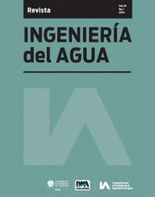
Ingenieria del Agua
Pioneering Research for Global Water SustainabilityIngenieria del Agua, published by Universitat Politècnica de València, Editorial UPV, is a prominent open-access journal dedicated to the field of water engineering and management. With its ISSN 1134-2196 and E-ISSN 1886-4996, this journal has been facilitating the dissemination of critical research and innovative practices in water resources since 1994. With a commitment to providing unrestricted access to high-quality research, Ingenieria del Agua aims to serve as a pivotal platform for researchers, professionals, and students alike. Focused on the intersection of hydrology, environmental engineering, and sustainability, the journal encourages submissions that address contemporary challenges in water resource management, promoting advancements that are vital for both ecological conservation and societal needs. By fostering a collaborative academic environment, it plays an essential role in shaping the future of water engineering.
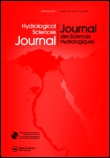
Hydrological Sciences Journal
Advancing water science for a sustainable future.Hydrological Sciences Journal, published by Taylor & Francis Ltd, is a leading peer-reviewed publication dedicated to advancing the field of hydrology, spanning topics from water management to climate impacts on hydrological systems. With an impressive impact factor and a noted Q1 category ranking in Water Science and Technology, the journal occupies a pivotal role in the academic landscape, facilitating high-quality research dissemination since its inception in 1982. The journal is indexed in Scopus, holding a commendable rank of #48 out of 261 in the Environmental Science category, placing it in the 81st percentile among its peers. Although it does not offer Open Access options, the journal ensures extensive reach and readership through institutional subscriptions. As it converges toward its milestone of 2024, the Hydrological Sciences Journal remains an indispensable resource for researchers, professionals, and students eager to explore the latest advancements and methodologies in hydrological research.